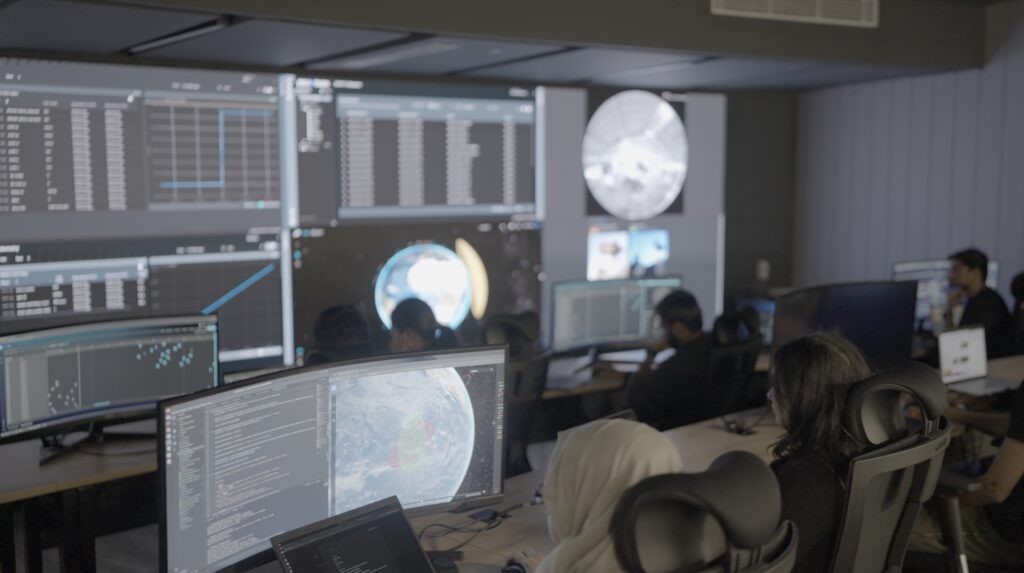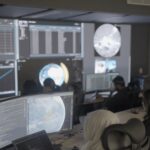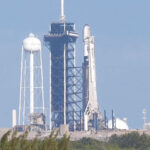Now Reading: The ultimate backup: why humanity needs a lunar seed vault — now
-
01
The ultimate backup: why humanity needs a lunar seed vault — now
The ultimate backup: why humanity needs a lunar seed vault — now

Humanity is losing the genetic diversity that sustains life on Earth at a pace that should alarm every nation. According to the UN Food and Agriculture Organization, about 75% of the world’s crop varieties have disappeared in the last century. According to Marie Haga, former Executive Director of the Global Crop Trust, it’s closer to 80%.
In the United States alone, more than 17,000 named varieties of apples once existed; today only about 5,000 remain. This narrowing of our genetic base — once vast and resilient — is now leaving global agriculture increasingly vulnerable to pests, disease, climate extremes and systemic shocks. In 2019, a landmark UN report warned one million species face extinction within decades. The “wild strains” of genetic plant material needed for vigor and healthy varieties are being lost forever.
For years, the world’s scientists and policymakers have treated seed banks as our first line of defense against genetic decline. More than 1,700 such facilities exist globally, storing seeds and plant material to ensure we can replant after disasters. The most important of these is the Svalbard Global Seed Vault — the “Doomsday Vault” — built deep inside an Arctic mountain in Norway. Designed to be the world’s fail-safe repository, it protects more than 1.3 million seed samples from almost every country on Earth.
As the Global Crop Trust describes it, the vault is “the ultimate insurance policy for the world’s food supply.” Yet recent events have shown that even the ultimate insurance policy needs a backup of its own.
When backups need a backup
In 2016, extreme warming in the Arctic caused permafrost around the Svalbard facility to melt, sending water into the vault’s entrance tunnel. Although the seeds were unharmed, the incident underscored a new reality: Climate change can threaten even the safest locations on Earth.
Then came war. In 2015, the civil war in Syria destroyed the ICARDA seed bank near Aleppo — one of the world’s last repositories of drought-resistant wheat and barley for the Middle East. For the first time in history, a withdrawal was made from the Svalbard Vault so that scientists could re-establish these crops elsewhere. The “backup to the backup” was activated far sooner than anyone anticipated.
Other disasters and conflicts over the past decade have similarly jeopardized national seed banks, proving that even our most protected systems are vulnerable. If Svalbard is the world’s last line of defense, what happens if that line is ever compromised? That question inspired a visionary idea: put a seed vault on the moon.
Project Transcendence: a bold beginning
In 2018, the United States Air Force launched Project Transcendence to explore building humanity’s ultimate biological archive on the lunar surface. The aim was simple yet unprecedented: create an off-world repository for Earth’s genetic heritage — a backup to the backup — immune to Earth-bound disasters. As part of the Air Force effort, I helped evaluate the security of the Doomsday Vault; and we learned a backup to the backup was highly warranted.
For a brief but electrifying period, a remarkable coalition formed. The Global Crop Trust, U.S. Department of Agriculture, Airbus, Lockheed Martin and the U.S. Air Force collaborated on the feasibility of designing and deploying such a vault. The plan envisioned a global design competition to determine how the vault would operate on the moon and how it could be integrated into the return of U.S. space missions. It would have served as the flagship non-crewed payload marking the next era of lunar exploration.

Lt. Gen. Steven Kwast, then Commander of Air Education and Training Command, and an early proponent of the U.S. Space Force, captured the spirit of the project when he argued that humanity must begin developing “lifeboats in space” to ensure long-term health and survival.
Why the moon?
The moon is one of the safest, most stable environments available in the solar system. It has no atmosphere, no weather, no biological activity and no political turmoil. Some regions — particularly permanently shadowed craters near the poles — maintain temperatures below –180°C. As Smithsonian scientist Dr. Lynne Parenti has noted, “The moon is ideal… it is remote, and it’s safe from disasters on Earth.”
These extreme conditions could naturally support cryogenic storage of seeds, spores and even animal gametes for thousands of years. Additionally, the moon’s lava tubes — vast underground chambers — provide natural radiation shielding and stable environments, almost perfectly suited for long-term preservation.
A lunar seed vault would essentially be a power-free cryogenic freezer built on a celestial body. Nothing on Earth could rival the security of such a location.
What happened?
The Transcendence initiative ultimately collapsed under the weight of geopolitics. The Global Crop Trust — whose mission is to safeguard crop diversity “forever” — was concerned that China must be included to ensure true global participation. U.S. defense leaders, operating within strategic realities, opposed the inclusion of a major competitor to the global West. When key military champions retired or were reassigned, momentum dissipated and the project was quietly forgotten by most.
Yet the need has only grown more urgent.
A renewed call to action
We are entering a new era of lunar activity. NASA’s Artemis program and commercial landers will soon carry significant payloads to the moon. This presents us with a historic opportunity. Instead of restricting these missions to symbolic gestures or isolated experiments, we can commit to something larger and more important — a planetary insurance policy for all humanity.
The Svalbard Vault teaches us an important lesson: Even the best Earth-based solutions have limits. A lunar seed vault can add a true fail-safe layer of protection for our species and the ecosystems that support humanity.
The path forward need not mirror the past. A lunar vault could be established by an international consortium of space agencies, NGOs, universities and private space companies — mirroring the collaborative spirit of the International Space Station.
It’s time to revive the ambition. A lunar seed vault is no longer science fiction. It is a practical, achievable step to preserve Earth’s biological legacy.
Human civilization must act while we still can. The next time we go to the moon, let us take the seeds of tomorrow with us.
David Stuckenberg, Lt Col, USAF, is a scientist and engineer with a background in national security. His work focuses on resilience, emerging technologies and safeguarding critical systems for future generations. He previously served as the founder of Project Transcendence, a U.S. Air Force led initiative to establish a lunar seed vault to secure humanity’s genetic plant material.
SpaceNews is committed to publishing our community’s diverse perspectives. Whether you’re an academic, executive, engineer or even just a concerned citizen of the cosmos, send your arguments and viewpoints to opinion@spacenews.com to be considered for publication online or in our next magazine. The perspectives shared in these opinion articles are solely those of the authors.
Stay Informed With the Latest & Most Important News
Previous Post
Next Post
Previous Post
Next Post
-
 012024 in Review: Highlights from NASA in Silicon Valley
012024 in Review: Highlights from NASA in Silicon Valley -
 02Panasonic Leica Summilux DG 15mm f/1.7 ASPH review
02Panasonic Leica Summilux DG 15mm f/1.7 ASPH review -
 03From Polymerization-Enabled Folding and Assembly to Chemical Evolution: Key Processes for Emergence of Functional Polymers in the Origin of Life
03From Polymerization-Enabled Folding and Assembly to Chemical Evolution: Key Processes for Emergence of Functional Polymers in the Origin of Life -
 04How New NASA, India Earth Satellite NISAR Will See Earth
04How New NASA, India Earth Satellite NISAR Will See Earth -
 05And Thus Begins A New Year For Life On Earth
05And Thus Begins A New Year For Life On Earth -
 06Astronomy Activation Ambassadors: A New Era
06Astronomy Activation Ambassadors: A New Era -
07SpaceX launch surge helps set new global launch record in 2024




















